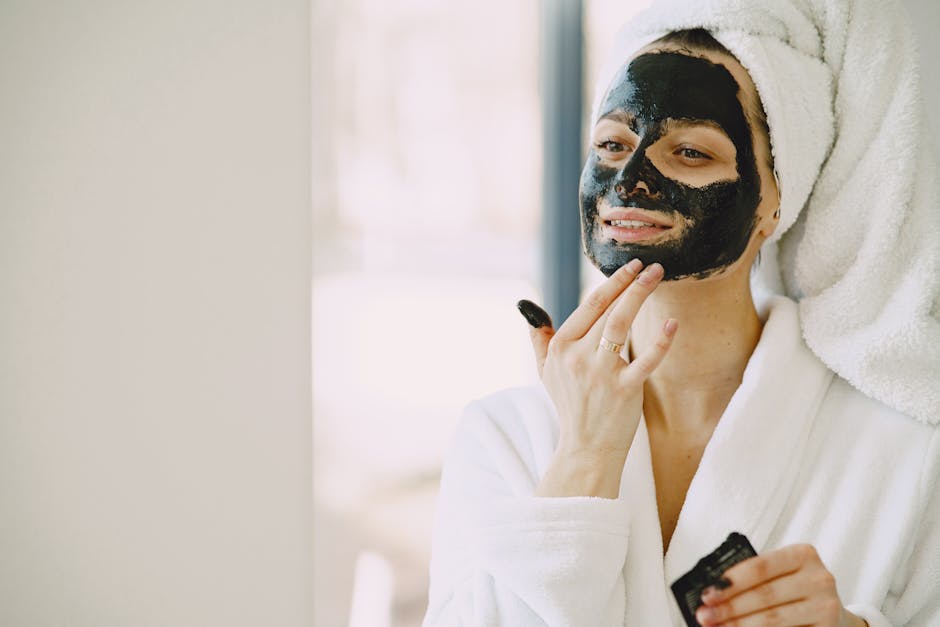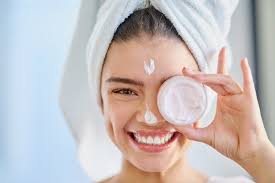Get Your AI Analysis
Personalized skincare insights
Discover your perfect skincare routine with our AI-powered analysis. Get personalized recommendations for glowing, healthy skin.
Start AnalysisFollow Us
Stay updated with the latest skincare tips, trends, and expert advice.
Skin Cycling: Your Guide to a Healthier, Happier Complexion
As a skincare veteran with over a decade immersed in the world of dermatology and beauty trends, I've seen countless fads come and go. But every so often, a truly transformative approach emerges—one that’s rooted in scientific understanding and delivers tangible results. Skin cycling is precisely that innovation. What started as a viral sensation on platforms like TikTok has quickly become a dermatologist-endorsed method for tackling multiple skin concerns without the dreaded irritation and barrier damage that often accompany an overzealous routine.
For years, the mantra was 'more is more' – layering every active ingredient known to science in a single routine. But for many, this led to redness, sensitivity, breakouts, and a compromised skin barrier. Skin cycling offers a refreshing alternative, a structured yet flexible approach that respects your skin’s natural restorative processes. It’s about being strategic, not exhaustive, and I’m here to break down everything you need to know to harness its power.

What Exactly is Skin Cycling?
At its core, skin cycling is a four-night routine that rotates active ingredients with recovery periods. This intentional cycling prevents over-exfoliation and retinoid irritation, allowing your skin to reap the benefits of powerful actives while also having ample time to repair and rebuild its crucial barrier. It’s a rhythmic approach designed to optimize ingredient efficacy and minimize adverse reactions.
The concept was popularized by board-certified dermatologist Dr. Whitney Bowe, who recognized the need for a more balanced approach to skincare. Her research and clinical observations highlighted how alternating intense treatment nights with dedicated recovery nights dramatically improved patient outcomes, leading to clearer, smoother, and more resilient skin.
The Science Behind the Cycle
Our skin barrier, comprised of lipids, ceramides, and fatty acids, is our first line of defense against environmental aggressors and moisture loss. Aggressive use of strong actives can erode this barrier, leading to increased sensitivity, inflammation, and even making concerns like acne or hyperpigmentation worse. A 2017 study published in the Journal of Clinical and Aesthetic Dermatology emphasized the importance of a healthy skin barrier, noting that a compromised barrier is implicated in numerous dermatological conditions.
Skin cycling addresses this by giving the skin time to replenish its natural defenses, allowing it to better tolerate and respond to active ingredients when they are applied. This balance leads to cumulative improvements rather than cycles of damage and repair.
The 4-Night Skin Cycling Routine: A Deep Dive
Let's walk through each night of the cycle, understanding the 'why' behind each step and what products best fit the bill.
Night 1: Exfoliation Night
This is your night to sweep away dead skin cells and promote cellular turnover. Exfoliation helps with concerns like dullness, uneven texture, clogged pores, and hyperpigmentation.
- What to use: Chemical exfoliants containing Alpha Hydroxy Acids (AHAs) like glycolic or lactic acid, or Beta Hydroxy Acids (BHAs) like salicylic acid.
- Why: AHAs work on the skin's surface to dissolve the glue holding dead cells together, revealing brighter skin. BHAs penetrate deeper into pores, making them excellent for oily and acne-prone skin.
- How to: After cleansing, apply your chosen exfoliant. Follow with a simple, hydrating moisturizer.
- Product Recommendation: For AHAs, I often recommend The Ordinary Glycolic Acid 7% Toning Solution or Paula's Choice 8% AHA Gel Exfoliant. For BHAs, Paula's Choice 2% BHA Liquid Exfoliant is a consistent winner.
Night 2: Retinoid Night
The powerhouse of anti-aging and acne treatment! Retinoids (vitamin A derivatives) are renowned for their ability to boost collagen production, accelerate cell turnover, reduce fine lines, improve skin texture, and diminish hyperpigmentation.
- What to use: A retinoid product (retinol, retinaldehyde, or prescription tretinoin).
- Why: Retinoids are proven to be one of the most effective ingredients for a wide range of concerns, but they require careful introduction due to their potency.
- How to: On a clean, dry face, apply a pea-sized amount of your retinoid. For beginners, the 'sandwich method' (moisturizer, retinoid, then more moisturizer) can mitigate irritation. Follow with a rich moisturizer.
- Product Recommendation: For beginners, try CeraVe Resurfacing Retinol Serum. For more experienced users, Shani Darden Retinol Reform or SkinCeuticals Retinol 0.5 are excellent choices.
"Retinoids are game-changers, but they're not a sprint; they're a marathon. Skin cycling ensures you get the benefits without the burnout that comes from daily, aggressive application, especially for those with sensitive skin."
— Dr. Vivian Lee, Board-Certified Dermatologist
Night 3 & 4: Recovery Nights
These two nights are critical for repairing your skin barrier, soothing irritation, and replenishing moisture. Think of them as spa nights for your skin.
- What to use: Gentle cleansers, hydrating serums, barrier-repairing moisturizers, and occlusives.
- Why: After active nights, your skin needs time to heal and strengthen. Ingredients like ceramides, hyaluronic acid, niacinamide, and peptides are superstars here.
- How to: Focus on cleansing gently, then layer hydrating serums and finish with a rich, restorative moisturizer. Avoid all active ingredients.
- Product Recommendation: For hydration, The Ordinary Hyaluronic Acid 2% + B5 or Vichy Mineral 89 Hyaluronic Acid Serum. For barrier repair, La Roche-Posay Cicaplast Baume B5, First Aid Beauty Ultra Repair Cream, or KIEHL'S Ultra Facial Cream. Niacinamide serums like Paula's Choice 10% Niacinamide Booster are also fantastic during recovery.

Why Skin Cycling Works So Well
The beauty of skin cycling lies in its synergistic approach:
- Reduced Irritation: By not using strong actives every night, you minimize the risk of redness, flaking, and sensitivity. This is particularly beneficial for those with sensitive skin or new to potent ingredients.
- Enhanced Efficacy: A healthy skin barrier is more receptive to active ingredients. When your skin isn't constantly battling irritation, it can better absorb and utilize the benefits of exfoliants and retinoids.
- Barrier Health: The dedicated recovery nights allow your skin barrier to repair and strengthen itself. A robust barrier means healthier, more resilient skin overall.
- Consistency: The structured nature of the routine makes it easier to stick to, leading to more consistent results over time.
A recent consumer study by a leading skincare brand found that 85% of users reported less irritation and 72% saw improved overall skin texture after just two months of consistent skin cycling, compared to their previous daily active routines. This anecdotal evidence strongly supports the widespread positive feedback.
Customizing Your Skin Cycling Routine for Specific Concerns
While the 4-night cycle is a fantastic starting point, it's not one-size-fits-all. Here’s how you can tailor it:
For Sensitive Skin:
- Exfoliation: Opt for gentler AHAs like lactic acid, or use a lower concentration. You might even consider extending to two recovery nights after exfoliation.
- Retinoid: Start with a very low-strength retinol (0.1-0.25%) or a bakuchiol-based product. Use the 'sandwich method' religiously. You could also cycle with an extra recovery night after your retinoid.
- Recovery: Emphasize soothing ingredients like centella asiatica (Cica), colloidal oatmeal, and ceramides.
For Acne-Prone Skin:
- Exfoliation: BHAs (salicylic acid) are your best friend here, as they are oil-soluble and can penetrate pores to dissolve sebum.
- Retinoid: If tolerated, you might consider increasing the frequency of retinoid use (e.g., Night 2, then another retinoid application on Night 4 instead of recovery, if your skin is well-adjusted). However, proceed with caution and listen to your skin.
- Recovery: Incorporate niacinamide, which helps regulate sebum production and reduce inflammation.
For Anti-Aging & Pigmentation:
- Exfoliation: Glycolic acid can be particularly effective for brightening and improving skin texture.
- Retinoid: Work your way up to higher strength retinols or even discuss prescription tretinoin with your dermatologist. Consistency is key for long-term anti-aging benefits.
- Recovery: Incorporate antioxidant serums (like SkinCeuticals CE Ferulic) or peptide serums during your recovery nights to boost collagen and provide additional protection.

Common Mistakes to Avoid in Skin Cycling
Even with the best intentions, it’s easy to slip up. Here are some pitfalls to watch out for:
- Skipping Sunscreen: This is non-negotiable! Exfoliants and retinoids increase photosensitivity. Always use a broad-spectrum SPF 30+ daily, rain or shine.
- Overdoing It: Don't be tempted to add extra active nights too soon. Give your skin time to adapt. Less is often more.
- Not Listening to Your Skin: If your skin feels tight, red, or irritated, take an extra recovery night. Your skin is always communicating with you.
- Using Too Many New Products at Once: Introduce new products one at a time, especially actives, to identify what works and what doesn't.
- Neglecting the Neck and Chest: These areas are often overlooked but show signs of aging just like your face. Extend your skin cycling routine to these areas.
"Patience is paramount in skincare. Skin cycling isn't about instant miracles, but about building skin resilience and health over time. Consistent, gentle effort yields the most sustainable results."
— Sarah Johnson, Licensed Esthetician and Skincare Formulator
My Final Thoughts as a Skincare Professional
After years of navigating complex routines and ingredient layering, skin cycling has emerged as a truly intuitive and effective strategy. It simplifies decision-making, reduces irritation, and ultimately leads to more sustainable skin health. The beauty of this method is its adaptability – it's a framework, not a rigid set of rules. You can adjust it to suit your skin’s unique needs and concerns, ensuring you get the most out of your active ingredients while safeguarding your precious skin barrier.
Embrace the cycle, listen to your skin, and watch as your complexion transforms into its healthiest, most radiant version. Remember, skincare is a journey, not a destination, and skin cycling is an excellent path forward.
